Roe is a common ingredient in sushi that adds a unique flavor and texture to the dish. It is the fully ripe egg masses of fish and certain marine invertebrates, such as sea urchins. Roe has been used for centuries by sushi chefs who wanted to enhance the taste and appearance of their dishes.
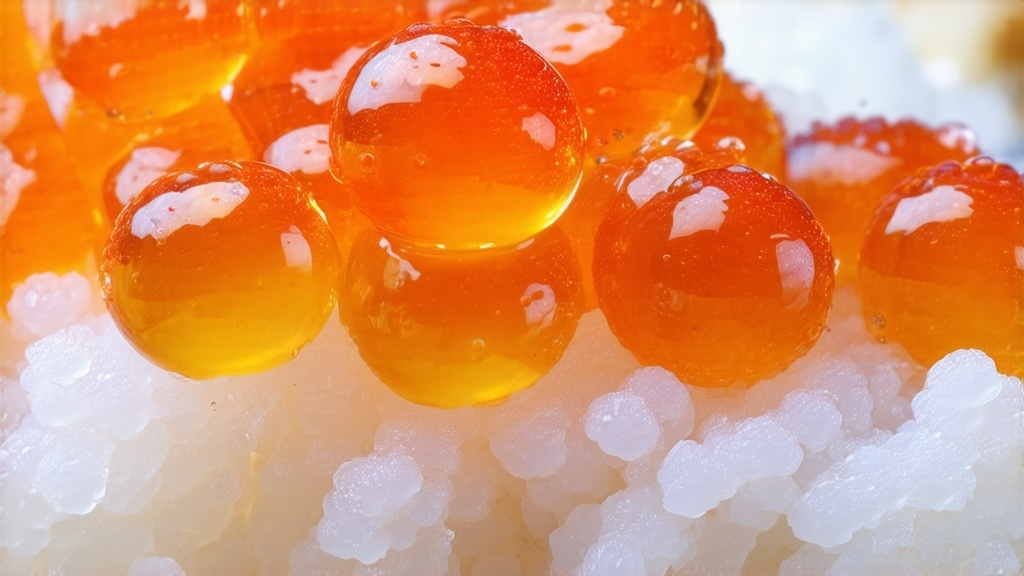

Understanding roe in sushi is essential for sushi lovers who want to appreciate the dish’s complexity and variety. Different types of roe have different flavors, textures, and nutritional values. Some roe varieties are larger and have a more delicate texture, while others are smaller and have a firmer texture. Understanding the different types of roe and their characteristics can help sushi lovers choose the right sushi dish for their taste preferences.
Key Takeaways
- Roe is a common ingredient in sushi that adds a unique flavor and texture to the dish.
- Different types of roe have different flavors, textures, and nutritional values.
- Understanding the different types of roe and their characteristics can help sushi lovers choose the right sushi dish for their taste preferences.
Understanding Roe in Sushi
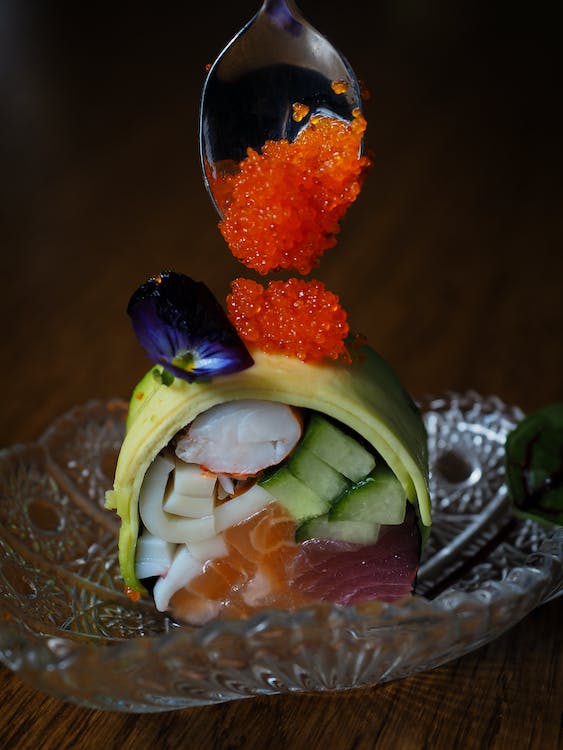
Roe is a popular ingredient in sushi that adds a unique flavor and texture to the dish. In Japanese cuisine, roe is known as “ikura” and is harvested from various fish such as salmon, trout, and herring. In this section, we will explore different types of roe, the harvesting and preparation of roe, and how it is used in different sushi varieties.
Different Types of Roe
There are many types of roe used in sushi, each with its own unique flavor and texture. Here are some of the most common types of roe:
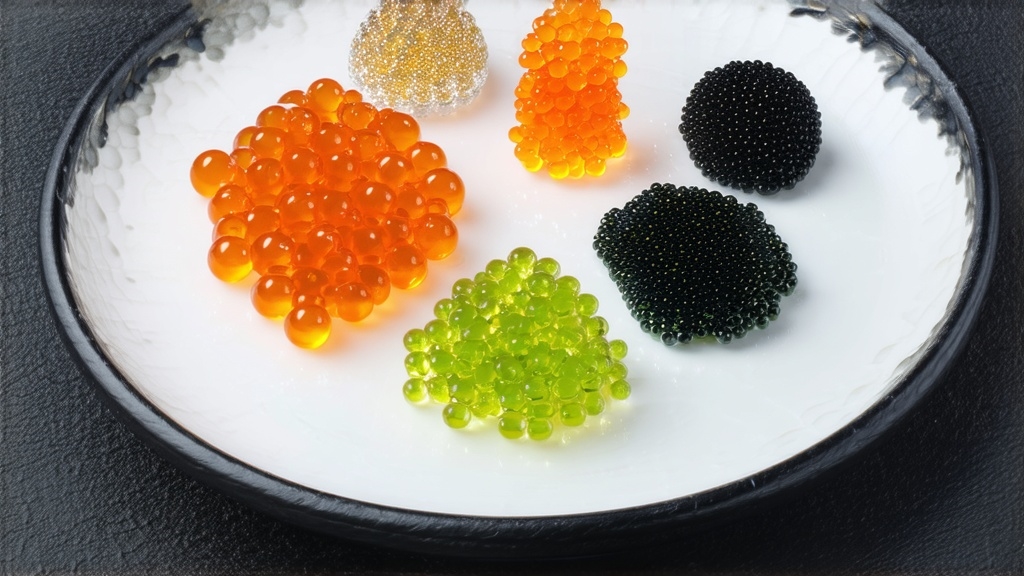

- Salmon roe (ikura): This is the most popular type of roe used in sushi and is known for its bright orange color and slightly sweet flavor. It is often used as a topping on sushi rolls or as a filling in gunkan maki.
- Tobiko: This is flying fish roe that is smaller in size and has a crunchy texture. It comes in different colors, such as orange, green, and black. Tobiko is often used as a topping on sushi rolls or as a garnish.
- Masago: This is capelin roe that is smaller in size and has a mild flavor. It is often used as a topping on sushi rolls or as a filling in gunkan maki.
- Uni: This is sea urchin roe that has a creamy texture and a briny flavor. It is often used as a topping on sushi rolls or as a filling in nigiri sushi.
Harvesting and Preparation of Roe
Roe is harvested from various fish and is typically prepared by adding salt to preserve it. The roe is then rinsed, drained, and sometimes marinated in soy sauce or sake. The preparation of roe can vary depending on the type of fish it comes from.
Common Roe Varieties in Sushi

Roe is a popular ingredient in sushi that adds a unique flavor, texture, and color to the dish. Here are some of the most common types of roe used in sushi:
Ikura
Ikura is a type of salmon roe that is bright red and has a slightly salty taste. It is often used as a topping for nigiri sushi and is also used in sushi rolls. Ikura is a good source of omega-3 fatty acids, which are essential for maintaining good health.
Tobiko
Tobiko is the roe of flying fish and is often used as a topping for sushi rolls. It has a distinct smoky, salty flavor with a hint of sweetness and a crunchy texture. Tobiko is available in different colors, including red, green, and black, and is often used to add a pop of color to sushi dishes.
Masago
Masago is the roe of capelin, a small fish found in the North Atlantic Ocean. It is smaller than tobiko and has a milder flavor. Masago is often used as a topping for sushi rolls and is also used in salads and other dishes.
Flying Fish Roe
Flying fish roe is similar to tobiko but has a slightly different flavor and texture. It is often used as a topping for sushi rolls and is available in different colors, including red, green, and black.
Salmon Roe
Salmon roe is larger than ikura and has a more delicate flavor. It is often used as a topping for nigiri sushi and is also used in sushi rolls.
Capelin Roe
Capelin roe is similar to masago but has a slightly different flavor and texture. It is often used as a topping for sushi rolls and is also used in salads and other dishes.
Smelt Roe
Smelt roe is similar to tobiko but has a slightly different flavor and texture. It is often used as a topping for sushi rolls and is available in different colors, including red and black.
Red Caviar
Red caviar is a type of sturgeon egg that is often used as a topping for sushi rolls. It has a rich, buttery flavor and a delicate texture.
Sea Urchin
Sea urchin roe, also known as uni, is a delicacy in sushi. It has a rich, buttery flavor and a creamy texture and is often used as a topping for nigiri sushi.
Overall, roe is an essential ingredient in sushi that adds flavor, texture, and color to the dish. Each type of roe has its own unique flavor and texture, and sushi chefs often use a combination of different types of roe to create a well-balanced dish.
Roe as a Sushi Ingredient
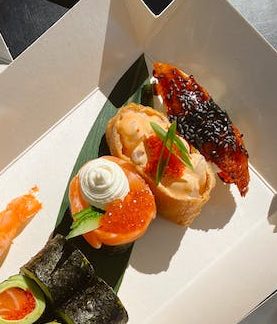
Roe, also known as fish eggs, is a popular sushi ingredient that adds a unique flavor and texture to sushi dishes. It is commonly used as a topping on sushi rolls or nigiri sushi, and can also be used in California rolls. In this section, we will discuss how roe is used in different types of sushi.
Roe in Nigiri
Nigiri sushi is a type of sushi that consists of a small ball of seasoned sushi rice topped with a slice of raw fish or other seafood. Roe is often used as a topping for nigiri sushi, adding a burst of flavor and texture to each bite. The most common types of roe used in nigiri sushi are tobiko (flying fish roe) and ikura (salmon roe).
Tobiko roe is small, crunchy, and has a mild, sweet flavor. It is often seasoned with soy sauce or other seasonings to enhance its flavor. Ikura, on the other hand, is larger and has a more intense flavor that is slightly salty and fishy. It is often marinated in a mixture of dashi, mirin, and shoyu to enhance its flavor.
Roe in Sushi Rolls
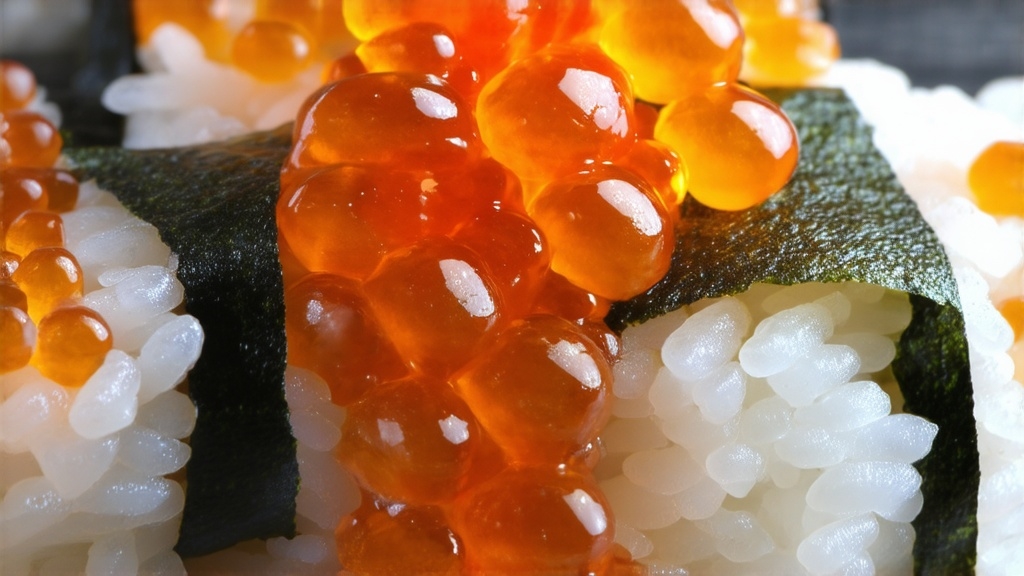

Sushi rolls, also known as maki sushi, are made by rolling seasoned sushi rice and other ingredients in nori seaweed. Roe is often used as a topping for sushi rolls, adding color, flavor, and texture to the dish. The most common types of roe used in sushi rolls are tobiko and masago (capelin roe).
Tobiko roe is often used in sushi rolls to add a pop of color and crunchiness. Masago, on the other hand, is smaller and has a milder flavor than tobiko. It is often used as a garnish for sushi rolls or mixed with other ingredients to create a flavorful filling.
Roe in California Rolls
California rolls are a type of sushi roll that is made with crab meat, avocado, and cucumber, and often topped with tobiko or masago. The roe adds a pop of color and flavor to the dish and complements the other ingredients well.
Taste and Texture of Roe

Roe, also known as fish eggs, is a popular ingredient in sushi that adds a unique taste and texture to the dish. The taste of roe can vary depending on the type of fish it comes from and how it is prepared.
In general, roe has a salty taste with a slight sweetness and smoky flavor. Some types of roe can also have a slightly bitter taste. The texture of roe can range from soft and creamy to firm and crunchy, depending on the type of roe and how it is prepared.
Here is a table of some common types of roe used in sushi, along with their taste and texture characteristics:
| Type of Roe | Taste | Texture |
|---|---|---|
| Salmon Roe | Salty with a hint of sweetness | Firm and crunchy |
| Tobiko Roe | Salty with a smoky flavor | Small and crunchy |
| Masago Roe | Mildly sweet with a salty taste | Small and crunchy |
| Uni (Sea Urchin Roe) | Sweet and briny with a buttery texture | Soft and creamy |
When choosing roe for your sushi, it is important to consider the taste and texture of the roe and how it will complement the other ingredients in your dish. Some types of roe, like salmon roe, are better suited for adding a crunchy texture to your sushi, while others, like uni, are better for adding a rich, creamy flavor.
Overall, the taste and texture of roe can add a unique and delicious element to your sushi dish. Whether you prefer a salty, smoky flavor or a sweet, creamy texture, there is a type of roe that will suit your taste preferences.
Serving and Eating Roe
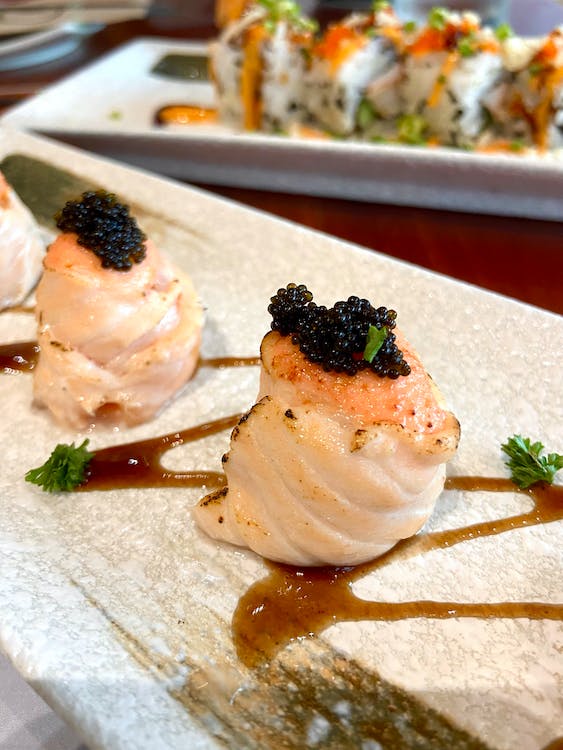
Roe is a popular ingredient in sushi and is often used as a garnish. It is typically served on top of nigiri sushi or as a filling in sushi rolls. When eating sushi with roe, it is important to use the proper etiquette.
To start, it is recommended to mix a small amount of wasabi into the soy sauce to create a dipping sauce. This will enhance the flavor of the sushi and complement the taste of the roe. However, be careful not to add too much wasabi, as it can overpower the flavor of the sushi.
When eating sushi with roe, it is best to eat it in one bite. This will allow you to experience the different textures and flavors of the sushi in one bite. Additionally, it is important to eat the sushi upside down, with the roe side facing down. This will allow the roe to come into contact with your tongue first, enhancing the flavor.
Avocado is a popular ingredient in sushi rolls and pairs well with roe. The creaminess of the avocado complements the texture of the roe, creating a delicious combination. Sake is also a popular beverage to pair with sushi, as it complements the flavors of the sushi and enhances the overall dining experience.
Sujiko, or salmon roe that is still in the sac, is a popular type of roe used in sushi. It is typically served on top of nigiri sushi or as a filling in sushi rolls. It has a slightly sweet and salty flavor, and the sac adds a unique texture to the sushi.
Roe can also be used as a topping for salads, pancakes, flatbreads, or crackers. When serving roe as a topping, it is important to use a small amount to avoid overpowering the dish. Additionally, it is important to use fresh roe, as it can spoil quickly.
Roe in Sushi Restaurants
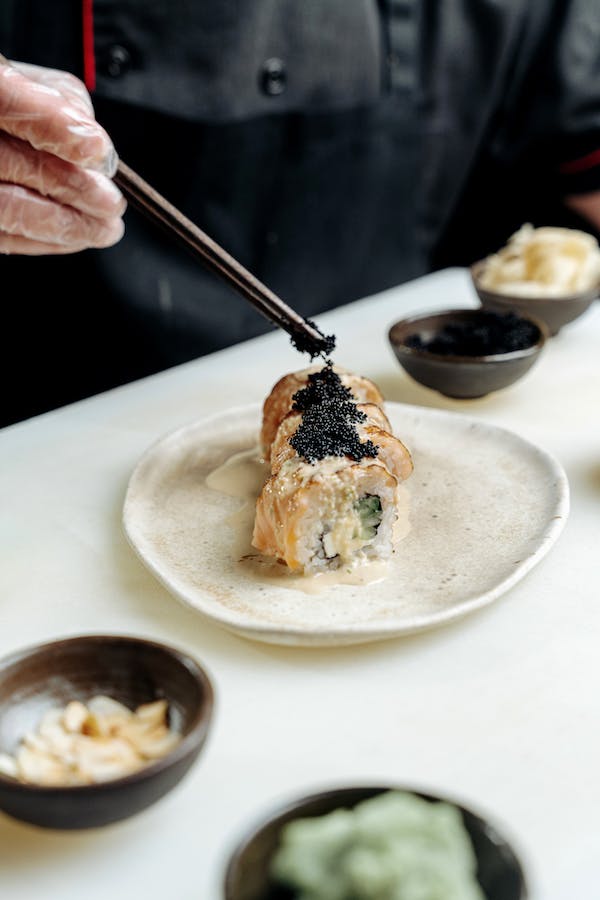
Roe, or fish eggs, is a popular ingredient in sushi restaurants. It is used as a topping for sushi rolls, as well as a filling for gunkan maki (battleship roll). The most commonly used roe in sushi is salmon roe, also known as ikura. It has a delicate texture and a slightly salty taste that complements the flavor of the sushi rice.
Sushi restaurants often use different types of roe to add variety to their dishes. Some of the other types of roe that can be found in sushi restaurants include:
- Tobiko: Flying fish roe that is small, crunchy, and has a bright orange color. It is often used as a garnish for sushi rolls.
- Masago: Capelin roe that is small and has a similar texture to tobiko. It is often used as a substitute for tobiko due to its lower cost.
- Uni: Sea urchin roe that has a creamy texture and a rich, buttery flavor. It is a popular ingredient in sashimi and sushi.
Sushi restaurants may also use roe from other species of fish, such as trout or sturgeon. These types of roe may have a different texture and flavor profile compared to the more commonly used roe.
It is important to note that sushi restaurants may use both natural and artificial coloring agents to enhance the color of the roe. Some sushi restaurants may also use preservatives to extend the shelf life of the roe.
Nutritional Value of Roe

Roe, also known as fish eggs, is a common ingredient in sushi. It is a good source of several essential nutrients, including protein, minerals, vitamins, and omega-3 fatty acids.
Protein
Roe is an excellent source of protein, which is essential for building and repairing tissues in the body. A 100-gram serving of salmon roe contains around 24 grams of protein, while a 100-gram serving of flying fish roe contains approximately 22 grams of protein.
Minerals
Roe is also a good source of minerals, including calcium, iron, selenium, and magnesium. These minerals are essential for maintaining healthy bones, muscles, and organs.
Vitamins
Roe is rich in several vitamins, including vitamin A and vitamin B-12. Vitamin A is essential for maintaining healthy eyesight, while vitamin B-12 is crucial for maintaining healthy nerve cells and red blood cells.
Omega-3 Fatty Acids
Roe is a rich source of omega-3 fatty acids, which are essential for maintaining cardiovascular health. These fatty acids help to reduce inflammation in the body and lower the risk of heart disease.
Calories
Roe is relatively low in calories, making it an ideal food for those who are watching their weight. A 100-gram serving of salmon roe contains around 250 calories, while a 100-gram serving of flying fish roe contains approximately 140 calories.
In summary, roe is a nutritious food that provides several essential nutrients, including protein, minerals, vitamins, and omega-3 fatty acids. It is also relatively low in calories, making it an ideal food for those who are watching their weight.
Health Benefits and Concerns
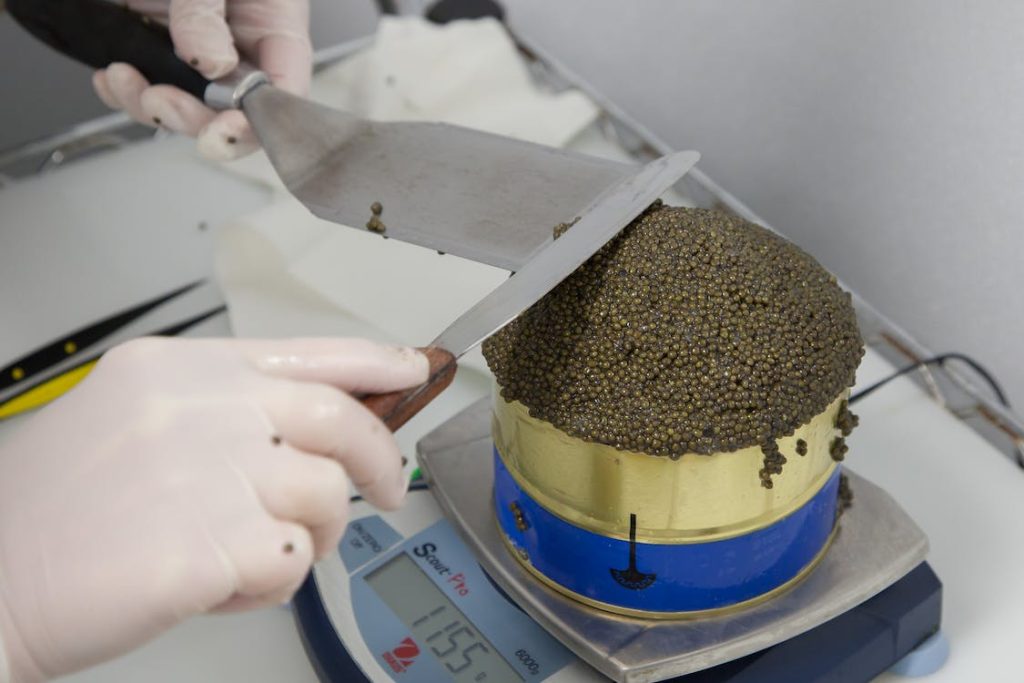
Roe is a popular ingredient in sushi and has been consumed for centuries. It is a good source of nutrients and offers several health benefits. However, it also has some concerns that should be kept in mind.
Health Benefits
Roe is rich in nutrients like phospholipid fats, which are essential for brain function and maintaining healthy cell membranes. It is also a good source of unsaturated fatty acids, which help to reduce inflammation and oxidative damage in the body. Additionally, roe contains antioxidants that protect against cell damage and may reduce the risk of chronic diseases.
Furthermore, roe is a good source of protein, with a 1-ounce serving of fish roe containing around 6 grams of protein. It is also low in calories and carbohydrates, making it a great addition to a healthy diet.



Konnichiwa! (Hello!) I'm Pat Tokuyama, a Japanese tofu cookbook author, who travels for music, food, and adventure. If you like Japanese tea, checkout some of the newestorganic japanese tea, matcha bowls and noren and more!
** Curious about the Plant Based Japanese Cooking Club? ** Learn more here!
Concerns
One concern with roe is its high cholesterol content. A 1-ounce serving of fish roe contains around 200 milligrams of cholesterol, which is more than half of the recommended daily intake. Therefore, individuals with high cholesterol levels should consume roe in moderation.
Another concern is its high sodium content. Some types of roe, such as salmon roe, can contain high levels of sodium. Excessive sodium intake is associated with high blood pressure, which can lead to heart disease and stroke.
In conclusion, roe is a nutritious ingredient that offers several health benefits. However, it should be consumed in moderation, especially for individuals with high cholesterol or sodium intake.


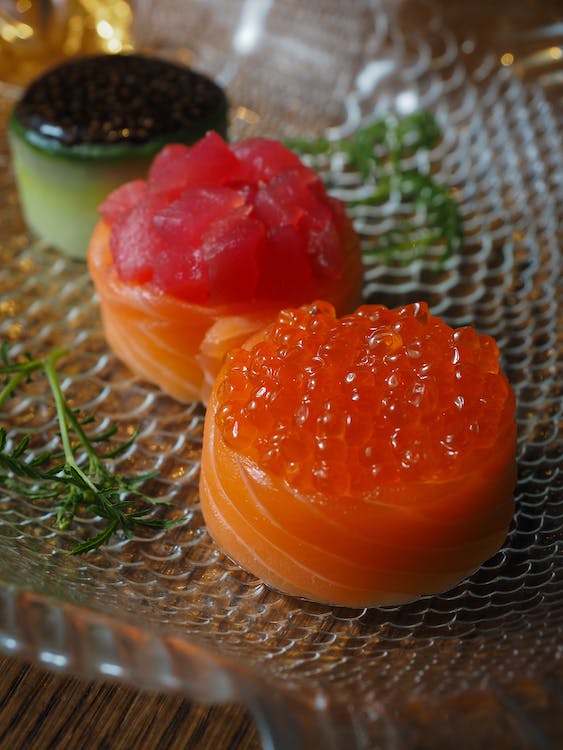


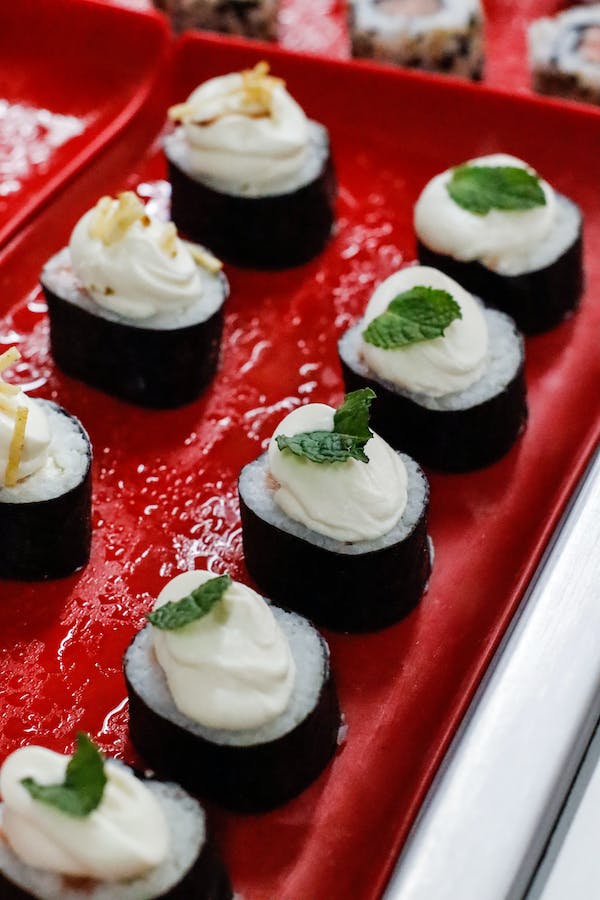

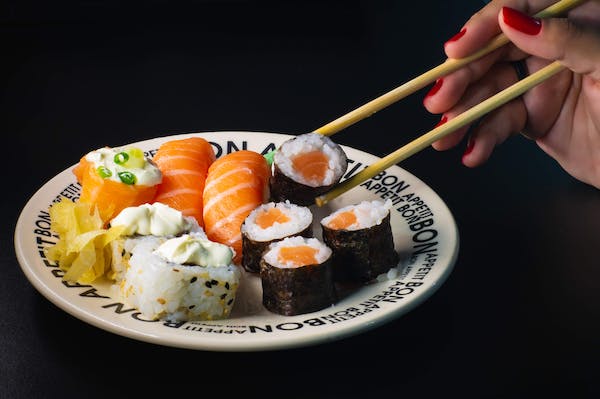
Konnichiwa! (Hello!) I'm Pat Tokuyama, a Japanese tofu cookbook author, who travels for music, food, and adventure. If you like Japanese tea, checkout some of the newestorganic japanese tea, matcha bowls and noren and more!
** Curious about the Plant Based Japanese Cooking Club? ** Learn more here!